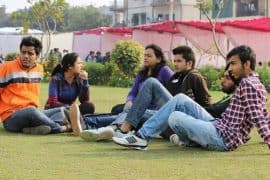Homosociality involves non-romantic, non-sexual connections between individuals of the same sex, such as friendships, often used to understand male dominance. It affects beliefs, actions, and cultural standards, shaping ideas of masculinity and continuing patterns of misogyny, urging a more profound societal investigation.
Homosociality involves same-sex relationships that are not romantic or sexual in nature, such as friendship, mentoring, and others. The concept is primarily used by researchers to explain how men maintain their dominance in society. In addition to distinguishing it from homosexuality, the term is used to allude to a type of male bonding that is frequently accompanied by fear or hatred of homosexuality. Feminists frequently use this term to highlight aspects of male solidarity.
The concept can be set quite easily and can be analysed in our day-to-day lives, where the comfort of a social companion is implicitly developed through the impacts that our society leaves. These male homosocial groups take care of the desired homosocial interactions and impact the beliefs, attitudes, and behaviours of the men associated with the community. The groups that they form develop a wider understanding of the mass opinions on the issues that are considered appropriate or inappropriate, desirable or undesirable, for conversations among men, and what interests them is ambiguous within the group itself. Apart from talking about feelings and gossip about personal lives, these relationships are also places for them to discuss topics like sports, women, business, politics, and drinking.
The factors like gestures, facial expressions, and physical location of each group member also vary to a wider extent, and that results in indulgence with the subject matters that include the objectification of women, the emotional detachment they feel, and the competition and hierarchy among the group members themselves.
Since a young age, boys have shown interest in associating with children of the same age. This childhood play paves the platform over which they define masculinity for themselves. The sexual segregation that starts widening post-9 to severe levels in some developing and underdeveloped parts of the world turns into hegemonic social standards of rigidity that are imposed upon them.
The cultural impact, for example, where they are expected to not develop emotional relationships with anyone and the basics of the driving hegemonic masculinity never sustains the emotional interdependence and sympathetic outlook but upon the pressurised concretization of masculine standards. The norms practiced in these settings are nevertheless unrecognised but are the root of the practicing institutions that govern the world.
This passage is written with a motif to bring this existing field of matters to light, along with a motif to bring these studies to light to understand society and behaviours as social beings with a new lens infused with modern standards of reason.
If we need to tackle misogyny, then a better understanding could only be developed in the spaces where unrecognised grooming takes place, which needs to be cleaned out to its root so that even in personal conversations, the standards are not defined over the sacrificed self of the fairer sex.
Read Also: Sex Amma on Emotional (Un)availability
Featured Image Credits: Adam Smith Institute
Divya Malhotra





Comments are closed.